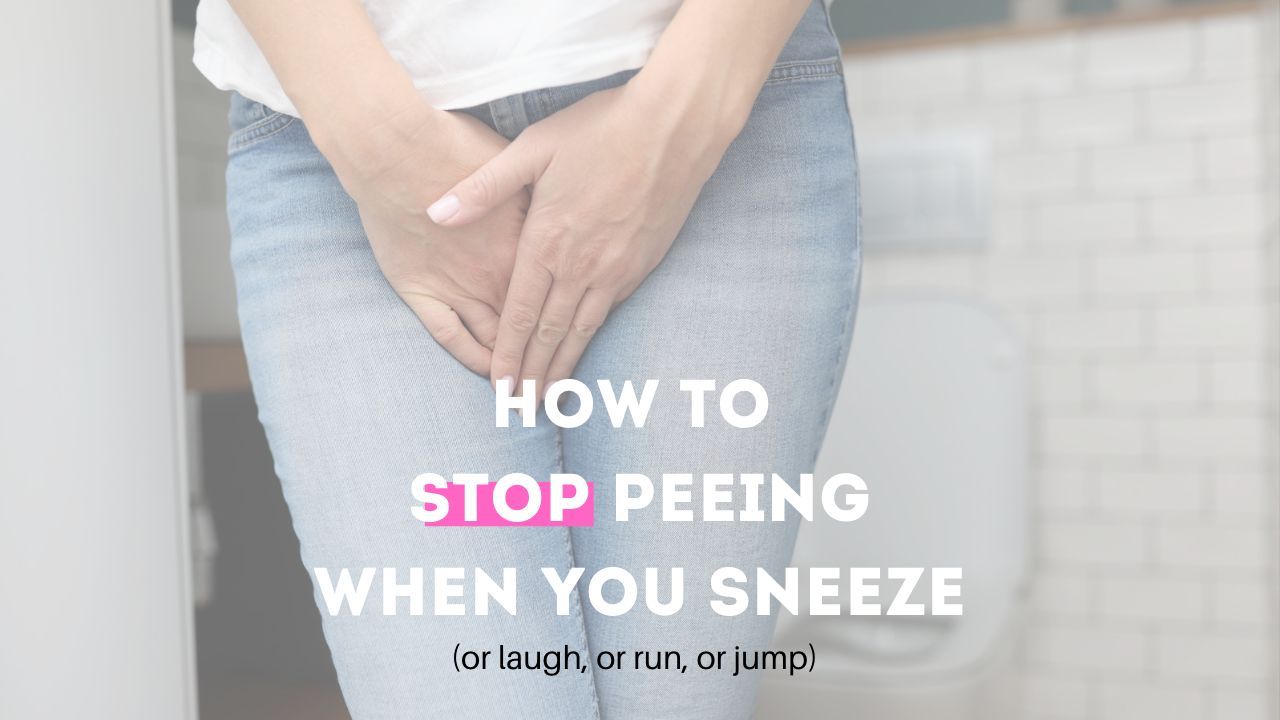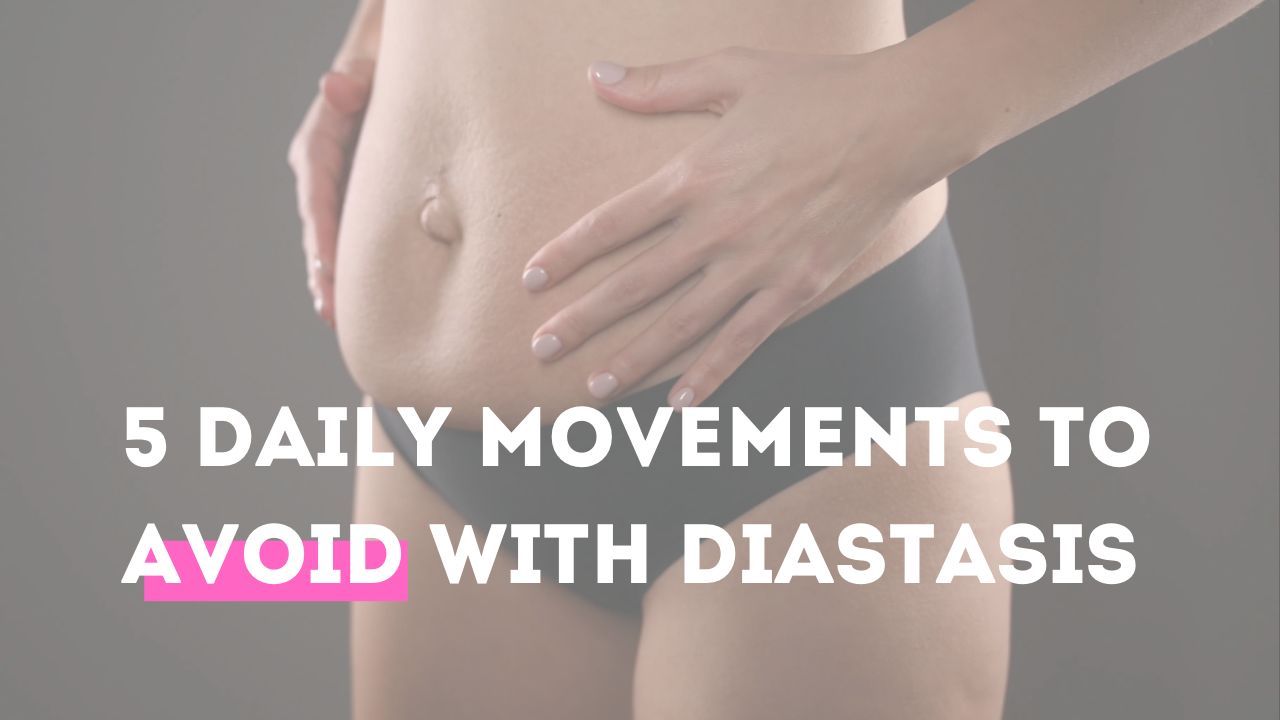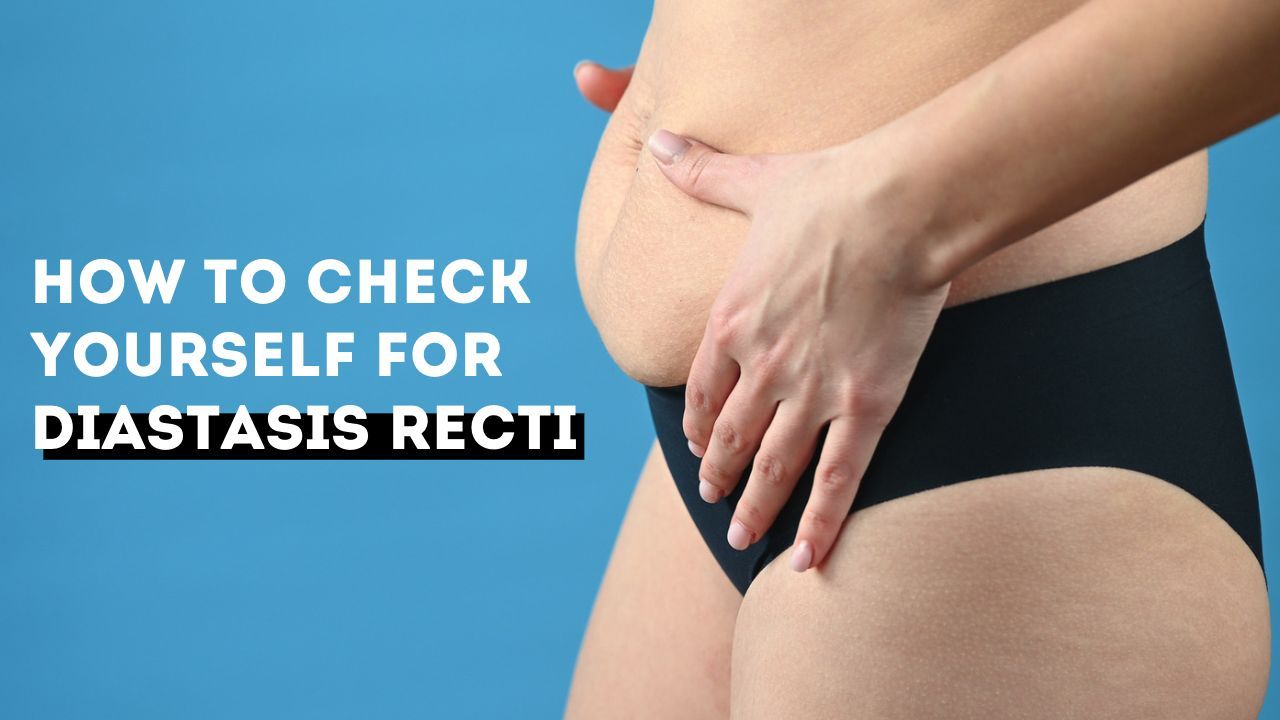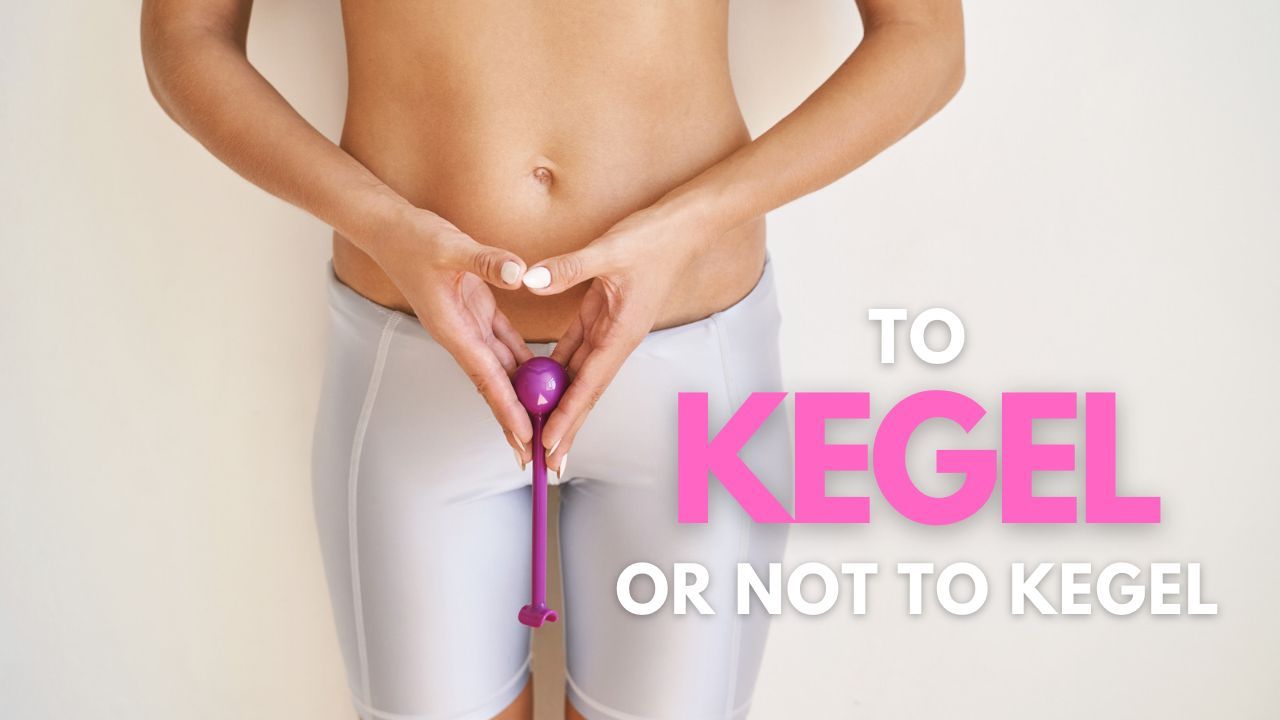Is It Really Bloating..?

If you’re experiencing belly bloating and despite endless food eliminations, you just cannot get to the bottom of your mysterious bloating, there’s a really good chance there could be something non food related at play. Hear me out here…
The anatomy of a bulging tummy:
If you’ve ever seen one of those old English Victorian houses where the walls are bowed due to a compromised or damaged foundation, the exact same thing happens in the body when the foundation (pelvic floor) has been weakened.
What that looks like is a bulging in the abdomen area (commonly known as the “mummy tummy” and is often mistaken for food related bloating when in actual fact it’s very often an issue with the pelvic floor (although it absolutely can be both).
It’s definitely not unique to women. If you know someone with a “dad belly” there’s a good chance they’ve neglected their pelvic floor over time too.
The causes of a “mummy tummy”:
Essentially the underlying cause of a “mummy tummy” is usu...
How to stop peeing when you sneeze (or run, or jump, or laugh)

You might be surprised to know that leaking is a surprisingly easy fix.
So quite why we have all been led to believe that’s it’s something that we must now “tolerate” because “we are mums now” is an absolute mystery to me 🤷🏼♀️
There’s a name for it. It’s called Stress Incontinence, and it occurs when you cough, laugh, run, jump, sneeze, etc., and you pee your pants a little as a result. This often happens when too much pressure is exerted on the bladder, forcing urine out. In most cases, this is a result of weakened pelvic floor muscles, usually due to childbirth, age, and/or menopause.
Urge Incontinence occurs when there is a strong urge to urinate despite the fact that your bladder may not be full. This urge is often strong enough that you can’t make it to the bathroom in time. This is usually related to having a pelvic floor that is too tight (often from doing too many “Kegels”). This is a whole separate conversation. But I will just say that tightness does not equal ...
6 Things I Wish Women Were Taught About Their Bodies

I wish I'd been more informed prior to embarking on the journey to motherhood. It’s now my passion to make sure others have all the info they need. Here are some of my latest musings…
1. “Postpartum” doesn’t end after 6 weeks.
The idea that the “postpartum phase” is technically only the first 6 weeks after birth is misguiding, and sets women up for feelings of inadequacy. It’s an unrealistic standard placed on mothers by society. In reality, it very often takes 1-2 years (sometimes more) to recover from 10 months of pregnancy + childbirth
2. There’s no such thing as “bouncing back”.
Let’s stop using the phrase “bounce back” and let’s stop expecting that of our bodies. Instead let’s focus on bouncing FORWARD, embracing and celebrating all that we’ve become, and working to become the strongest, most capable versions of our NEW selves.
3. Peeing your pants when you run, jump or sneeze is extremely common, but it’s NOT normal.
Women have been led to believe that this is some...
5 Daily Movements to Avoid With Diastasis

(and what to do instead...)
Don’t let these common movements hold you back from healing your diastasis. These movements will actually make it worse. So if you’ve been working hard to fix it, make sure your efforts aren’t in vain by making sure you make these small lifestyle adjustments as well.
Here are 5 daily movements to avoid and what to do instead:
1. Sneezing without engaging your core

Sneezing, coughing and blowing your nose exerts forceful pressure on your abdominal muscles, causing them to bulge forward, putting stress on the already compromised connective tissue. This connective tissue (the linea alba) is what holds your abdominal muscles together, and is one of the slowest tissues in the body to repair. If we are working to repair, but also regularly putting pressure on it, we are taking one step forward, two steps back.
2. Sitting straight up from laying down

Have you ever sat up in bed, or gone to get up from your matwork and noticed your abs domin...
Most people think that diastasis looks like this…

When you think about Diastasis Recti (DR), most people think that it either can’t be seen from the outside, that it can only be detected if you try to put your fingers in between your abs, or that if you can see it from the outside that it would look like the first picture above.
But there are actually some pretty common tell tale signs just from looking at a person's stomach (even with clothes on) that they might have a DR.
The thing with diastasis recti is that the two “six pack” muscles are no longer being held tightly together by connective tissue, causing essentially a “collapse” of the abdominal wall and causing it to fall forward. If the muscles are still loose, the connective tissue has nothing firm to hold onto. And if the connective tissue has nothing firm to hold onto and is therefore still loose, then the skin has nothing firm to hold onto either. A domino effect. Because of this, a very common tell tale sign that there might be a DR present, is a sagging belly. Esp...
How to check yourself for Diastasis Recti

I hear so many women confused about whether or not they have ab separation, so let's dive in. Hopefully this information will be helpful to you.
Diastasis recti (or abdominal separation) happens when the connective tissue between your two rectus abdominis muscles or “six-pack” abs become stretched beyond their usual capacity and move apart to allow more space. During pregnancy, the six-pack muscles stretch to TWICE their original length! In some women it resolves by itself after pregnancy, but for the majority of us (especially those of us over 30), it often requires a bit of help to bring the muscles back together again. But contrary to common opinion, diastasis recti (DR) is not unique to pregnant women. It can also be caused by weight gain, weightlifting without proper abdominal pressure management, and is also more common than you would think in men!
As a result of this muscle separation, you might notice (or feel) a gap down the midline of your belly that you can fit your ...
How to lose inches off your waist without dieting

You will never hear me preaching about weight loss, or dieting, or “bouncing back”. Those aren’t phrases I ever use because I’m passionate about teaching women that when we focus instead on teaching the body how to FUNCTION at its absolute best, we will feel so much more capable, aligned, alive. The rest will fall into place.
Stay with me here, because I know you’re thinking “skinny bitch. What does she know? How can she possibly help me?” Hear me out because I have a track record for helping other women lose multiple inches off their waistline, because despite what many women think, those extra inches are not always “weight” related.
While bloating can very often be food related, as a pelvic floor expert I see all too often that a weak pelvic floor also has a huge effect on the way our midsection looks and very often is a major contributor to “belly bulge”. The pelvic floor is the literal foundation of your core, and if you’ve been doing all the crunches with a weak pelvic fl...
To Kegel or not to Kegel

Why Kegels aren’t helping you and what to do instead...
Did you know that Kegels are not particularly effective for the majority of women? That’s because they don’t give you the full picture of what needs to happen in your pelvic floor (the phrase and technique was originally made popular by a male doctor in the 1940s). I used to teach Kegels as a stand alone exercise, but I have since learnt that the pelvic floor was never designed to function/move on its own. It was designed to move in tandem with the diaphragm and it actually behaves and functions infinitely better that way.
The problem with Kegels is that:
a) it encourages “clenching”.
Clenching can very easily cause the pelvic floor to become too tight. And it can be very difficult to strengthen a muscle that is too tight.
and b) Kegels only give you about 20% of the picture.
Meaning, telling your pelvic floor to contract on its own without it working in tandem with your diaphragm is basically a recipe for disaster. I...
3 Core & Pelvic Floor Exercises That Are More Effective Than Crunches

Do you find that doing crunches, sit ups and planks just don’t give you the same results as when you were in your 20s? Or do your abs bulge or look strange when you try to do a sit up?
Think of the abdomen as being like a pressure canister. If when you crunch or do a sit up the pressure makes your lower abs bulge, then that pressure is also likely making your pelvic floor bulge as well.
This is bad because it can cause leaking, and even prolapse symptoms. So if you were thinking that leaking is “just a part of being a mom”, it’s not. It’s a pressure management issue.
There are plenty of ways in which you can strengthen your core that do not involve this high pressure situation. Which means that crunches are actually your least effective option at this point.
I’m assuming you’ve already done my free pelvic floor training to learn how to better manage this pressure (if you haven’t, the link is at the bottom).
Here are my 3 favorite ways to incorporate that technique into some ab ...
The effect of collagen on the pelvic floor

Just as with the rest of the body, the pelvic floor loses collagen as we age. So just like when our boobs and our chin starts to feel the effects of gravity over time due to decreased skin elasticity, so too does the pelvic floor. A lifetime of high impact activity without a proper pelvic floor routine to provide support can cause just as much (if not more) wear and tear on your pelvic floor as pregnancy and childbirth. Which is why it becomes even more important to strengthen and tone the pelvic floor as we get older, whether we’ve given birth or not.
I am seeing more and more women in their 40s who’ve never given birth who say to me “I think I might have a diastasis but how can this be when I've never given birth?”
Collagen is kind of like a glue that holds all the cells in the body together. It is very important for helping the connective tissue of your pelvic floor to remain linked together in order to support healthy function and to prevent developing pelvic floor dys...

